-
Playing in the Snow
It doesn’t snow much, here in southern England, but this week it has been cold. “New York cold,” as I refer to it, and that has brought to mind the winters of my youth.
Oh, they were brutal. Snow ten feet high, temps at twenty below, the ground covered in white from October to May … Well, maybe I exaggerate a bit. But I do recall having the snow up to my shoulders, and I have empirical evidence of that:
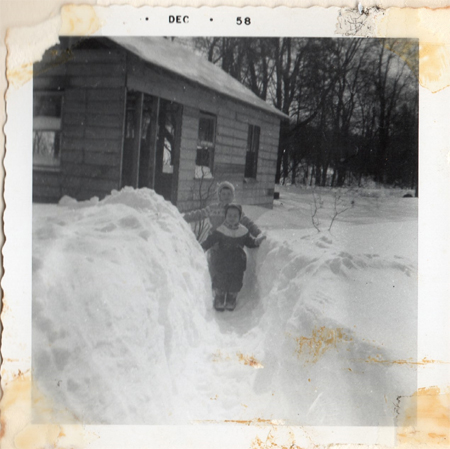
Okay, I was a little shorter then. Of course, I was only two and a half feet tall at the time, but still.
I am not going to discuss the winters of my childhood, where I had snow suits, knitted caps, and mittens on a string. What I wish to highlight are the winters of my early teens, where play was both more energetic and lengthy, and the Everest Expedition-like preparations that going out after supper to romp in the snow involved.
The first layer consisted of a pair of jeans and good, thick socks. Then a pair of long, woollen socks would go over the jeans. On top of that, we put plastic bread bags (minus the bread). This was, obviously, to keep our feet dry. It never occurred to me to think about it; we just did it. If I had thought about it, I would have understood that we hadn’t originated the idea, but I never would have guessed how universal this ritual was. In doing the usual sketchy research for this piece, I have discovered it was an integral part of many childhoods.
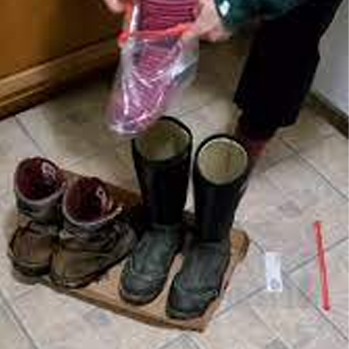
The ritual of donning the bread bags. So, with jeans, socks, and bread bags in place, we would put on a second pair of jeans, and then pull on our snow boots—green, lace-up boots that came to about mid-calf. The bottom layer of clothing—up to the bread bags—went into the boots, and the outer jeans were pulled over them. This, in theory, sealed the boots so no snow could get into them.
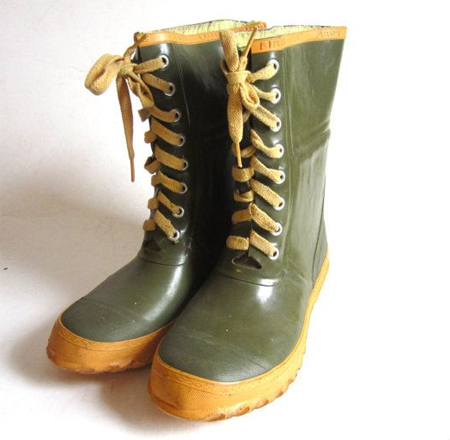
Your standard snowboot. 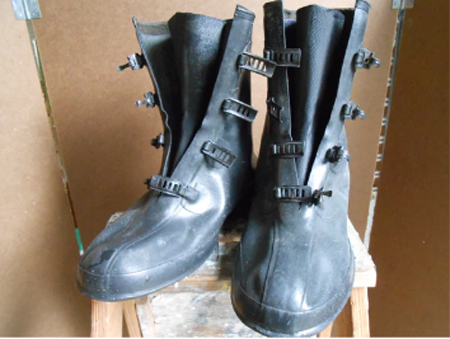
Sometimes we use this type of boot, but they weren’t as good. That was the most important bit, because legs and feet bore the brunt of the snow and ice. For the top, a shirt, a flannel shirt, and a good winter jacket was fine. Not a coat, as that hung down too low. A jacket that ended just below the waist was ideal. Then there was the wool cap, or one of those things that they call a balaclava in Britain, with the hole big enough to show your whole face. There was another type that we called a ski mask, that had holes for your eyes, nose, and mouth, but we hardly wore those because they made you look silly. They were best reserved for kidnappings and bank robberies.
The finale consisted of a pair of gloves. Good, thick leather ones.
Then, and only then, were we ready to go outside.
The best nights—although only 6:30 in the evening, it was full dark—were those when it was actively snowing, for it was so peaceful and pretty. The snow was also fluffy, ideal for making snowballs and snowmen. If it hadn’t snowed in a while, the snow became gritty, flecked with bits of ice. It didn’t stick together well and wasn’t good for much but crunching around in.
On other nights, when the sun made the top layer of snow soft, the chill of the darker hours would freeze it solid, and it was often hard enough to stand on. That made it idea for getting our sleds and saucers and going to a local hill to careen down on the ice, totally out of control, as steering on ice was impossible.
We’d stay out until our gloves were soaked through and our feet were numb, and then we’d trudge home.Once inside, we’d take off our outer clothing and hang the wet garments and gloves on a rack over the register to dry. Then we’d take off our boots. This was done with the aid of the table legs. The metal tubes that formed the legs of the Formica tables popular at that time, were configured in such a way as to make the perfect boot jack.
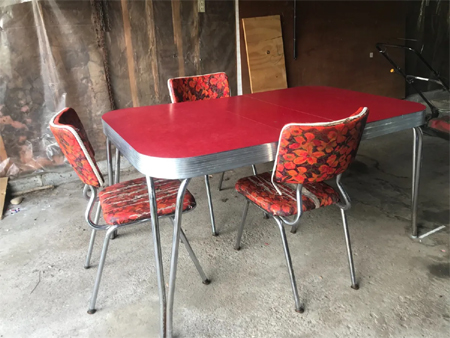
The legs on these types of table made the perfect boot jack. One by one we’d stick our boot heels into the groove and pry them off, releasing mounds of snow onto the kitchen floor. The plastic bags and sodden socks would come off next, and then we’d sit and wait as the warmth slowly crept into our extremities, causing unbearable pain.
It would start with a burning sensation that would grow and turn to pins and needles so sharp it brought tears to our eyes. I remember sitting at the kitchen table crying in pain, knowing there was nothing I could do about it but wait it out.
And then, of course, we’d do the same thing the next day.